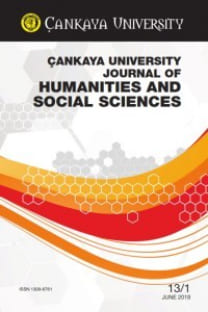Archetypal Mothering: DH Lawrence’s Lady Chatterley’s Lover1
D. H. Lawrence, Lady Chatterley’in Sevgilisi’nin yayımlanmasından sonra anlatıdaki iki değişik izlek nedeniyle gelişime açık bir yazar olarak kabul gördü. Bu izleklerden ilki kadın cinselliği ve evlilikleri başarısız olan kadınların cinsel tatmini konusundaki özgür seçimleri, diğeri ise üst sınıfa ait bir erkeğin karısıyla cinsel açıdan tatmin edici olmayan bir ilişki yaşarken, işçi sınıfından bir erkeğin aristokrat bir kadınla yaşadığı cinsel ilişkidir. Fakat 1970’lerin önde gelen feminist eleştirmenleri D. H. Lawrence ve romanını, kadın cinselliğini görmezden gelip cinsellik konusunda erkek bakış açısını yansıttığı, duygusal anlamda tek tatmin edici ilişki türü olarak heteroseksüel ilişkiyi kabul ettiği ve kadınların annelik yoluyla tatmin olmalarını öne sürdüğü için eleştirmişlerdir. Arketiplerin insan kişiliği üzerindeki etkilerini göz önünde bulunduran Jung eleştirisine göre, romanın ana erkek karakteri olan Mellors, ana kadın karaktere göre ne daha üstün ne de daha aşağıdadır. Ama yazar, erkek ana karakterin kadının gözünde onu tanrısallaştıran özellikleri olduğu ve evlilikte karşılıklı mutluluğun yalnızca kadının erkeğinin hayranlık uyandırıcı özelliğine uyum sağlamasına bağlı olduğu düşüncelerini okura dayatır.
Anahtar Kelimeler:
annelik, babalık, psikanaliz, feminist kuram, arketipler
Archetypal Mothering: D. H. Lawrence's Lady Chatterley's Lover
DH Lawrence was hailed as a progressive writer after the publication of Lady Chatterley’s Lover as the theme of the narrative suggests a shift in emphasis through (a) giving expression to women’s sexuality, speaking for their freedom of choice in sexual fulfillment if their marriage fails, and (b) depicting a working class man having sexual relations with an aristocratic woman, when the ruling class man fails to have sexually fulfilling relations with his wife. But, in the 1970s prominent feminist critics launched a tirade against DH Lawrence and Lady Chatterley’s Lover saying that (a) the novel undermines women’s sexuality, endorsing male-centered view of sexuality, hailing heterosexual relationship as the only emotionally satisfying relationship, and (b) it advocates women seeking fulfillment through motherhood. From Jungian perspective on the effects of archetypes upon human personality the principal male character in the novel, Mellors, is hermaphrodite, therefore, neither superior, nor inferior to the principal female character. However, the writer imposes upon the reader the belief that (a) the male protagonist possesses traits that make him a demigod to be looked at with awe by the female protagonist, and (b) conjugal happiness in married life solely depends upon the adjustments a woman needs to make owing to the aweinspiring prowess of her man.
Keywords:
mothering, fatherhood, psychoanalysis, feminist theory, archetypes,
___
- Clark, L.D. The Minoan Distance: The Symbolism of Travel in DH Lawrence (Tucson: University of Arizona Press, 1980).
- Doherty, Gerald. “The Art of Appropriation: The Rhetoric of Sexuality in D.H. Lawrence,” Style, 30/2 (Summer 1996), pp.289-304.
- Granofsky, Ronald. “‘His Father’s Dirty Digging:’ Recuperating the Masculine in DH Lawrence’s Sons and Lovers,” Modern Fiction Studies, 55/2 (2009), pp.242-264.
- Lawrence, DH. Lady Chatterley’s Lover, New Edition (London: Wordsworth Classics, 2005).
- Lessing, Doris. “Testament of Love” The Guardian (15 July 2006).
- Kinhead-Weakes, Mark. “The Marble and the Statue: The Exploratory Imagination of DH Lawrence,” in Gregor, Ian and Maynard Mack (eds.), Imagined Worlds: Essays in Honour of John Butt (London: Methuen, 1968).
- Kuttner, Alfred Booth. “Sons and Lovers: A Freudian Appreciation,” The Psychoanalytic Review, 3/3 (1916), retrieved from: http://ecmd.nju.edu.cn.
- Macleod, Sheila. Lawrence’s Men and Women (London: Heinemann, 1985).
- Millett, Kate. Sexual Politics (Urbana: University of Illinois Press, 2000).
- Schneider, Daniel J. The Consciousness of DH Lawrence: An Intellectual Biography (Kansas: University Press of Kansas, Lawrence, 1986).
- Zuk, Marlene. Sexual Selections: What We Can and Can’t Learn About Sex from Animals (Berkeley: University of California Press, 2002).
- ISSN: 1309-6761
- Yayın Aralığı: Yılda 2 Sayı
- Başlangıç: 2004
- Yayıncı: Çankaya Üniversitesi
Sayıdaki Diğer Makaleler
A Heteropian Novel: Atwood’s The Handmaid’s Tale
Satrapi's Persepolis: a Post-Colonial Work or Not?
Seyyed Habib MOUSAVI, Meisam MOHSENI, Editörden
Who Ignores Women: Not Only Man
The Process of Reconstruction in Margaret Atwood’s The Handmaid’s Tale
A Chronotopic Analysis: Bakhtinian Review of Women in Love by D. H. Lawrance
The "Morally Ideal Woman" in Middlemarch
A Comparison of Translation Styles of Suzanne Jill Levine and Gregory Rabassa
TEMMUZ-ARALIK 2011 Türkiye\'de Yayınlanan Yeni Kitaplar
The Stoic Mothers, Violence and Human Condition in Union Street
Archetypal Mothering: DH Lawrence’s Lady Chatterley’s Lover1
